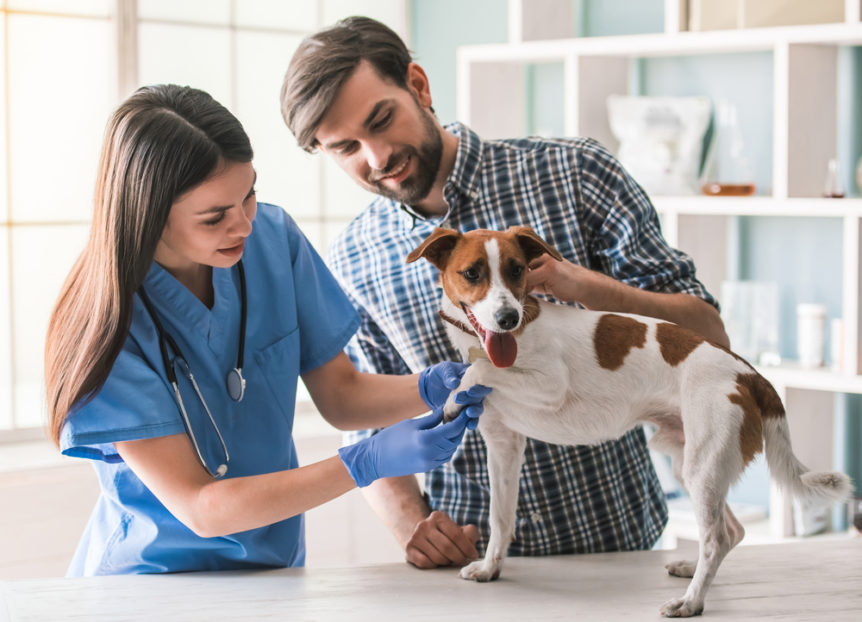Since August, Los Angeles County has seen cases of leptospirosis and canine influenza rise dramatically amongst the dog population.
Leptospirosis is bacterial disease that affects both dogs and humans. While it is typically rare, over 100 canine cases have already been reported in this region in 2021. This is a cause for concern since only 88 cases in total have been recorded between 2008-2020. Although it is treatable with antibiotics, leptospirosis can lead to kidney and liver damage if not treated in time. Although transmission of these bacteria from dogs to humans is not common, it still may be a risk, particularly in group settings where exposure is more likely..
Although Canine Influenza (the current outbreak is caused by H3N2, one of two strains) is more common, veterinarians have also seen a doubling of cases in a month from September to October with over 1000 confirmed and suspected cases in the county. A virus that often results in coughing and sneezing in dogs, Canine flu is treatable but can also lead to more serious conditions such as pneumonia. The cost of an outbreak doesn’t end there, one study estimated the financial burden of an outbreak of canine influenza at $4766/practice[1].
So far, most of these cases have been associated with places where dogs gather such as dog boarding facilities, grooming facilities and dog parks.
How do we Prevent the Spread of Leptospirosis and Canine Flu?
Vaccinate
Vaccines are available for both leptospirosis and canine flu. If you are concerned about the presence of leptospirosis or the canine flu virus, the best strategy would be to ensure that unvaccinated animals avoid the area. Should your dog need to go to a facility (ie. Daycare, groomer) or a dog park where they may encounter other dogs, veterinarians recommend you vaccinate your dog.
Routine Cleaning and Disinfection
Leptospira bacteria thrive in moisture rich environments (think soil, contaminated water and food bowls) while the canine flu virus can live on surfaces (and continue to cause infection) for 48 hours. This makes cleaning and disinfecting contaminated surfaces a key part in protecting your dog(s) from becoming infected.
Here’s what you can do:
- Routinely disinfect your facility
- Disinfect dog toys, food and water bowls, and launder blankets
- Make sure your dog(s) has access to CLEAN water and food bowls
- Humans can also contract leptospirosis if they come into contact with an infected dog’s urine. Wear rubber gloves if you need to clean an area where an infected dog has urinated.
- Hard, non-porous surfaces such as plastic play structures, can be cleaned and disinfected according to the label directions on your disinfectant
Leptospirosis vs Canine Flu Quick Facts
| LEPTOSPIROSIS | CANINE FLU | |
| How it Spreads | Direct contact with an infected animal Contact with contaminated water or urine or bodily fluids | Direct contact with an affected animal Spreads through the air via respiratory droplets when a sick dog barks, coughs or sneezes |
| Where it’s Found | Soil Water Urine/Bodily fluids Wherever wildlife, rats and mice proliferate | Surfaces where respiratory droplets land |
| Signs and Symptoms | Lethargy Lack of appetite Vomiting Abdominal pain Excessive urination Excessive drinking of water Fever Yellow eyes Kidney failure | Cough Discharge from nose or eye Loss of appetite Fever may occur Some dogs may have more severe pneumonia symptoms. |
| Prevention | Vaccinate Routine cleaning and disinfection | Vaccinate Routine cleaning and disinfection |
Resources
- Create Your Own Cleaning and Disinfection Protocol
- What You Need to Know About Leptospirosis
- What You Need to Know About Influenza
- Do Rescue™ Disinfectants kill Canine Influenza?
- Do Rescue™ Disinfectants kill Leptospirosis?
[1] Pilot study of the financial and practice protocol impacts of canine influenza virus (H3N2) outbreaks in example veterinary practices

